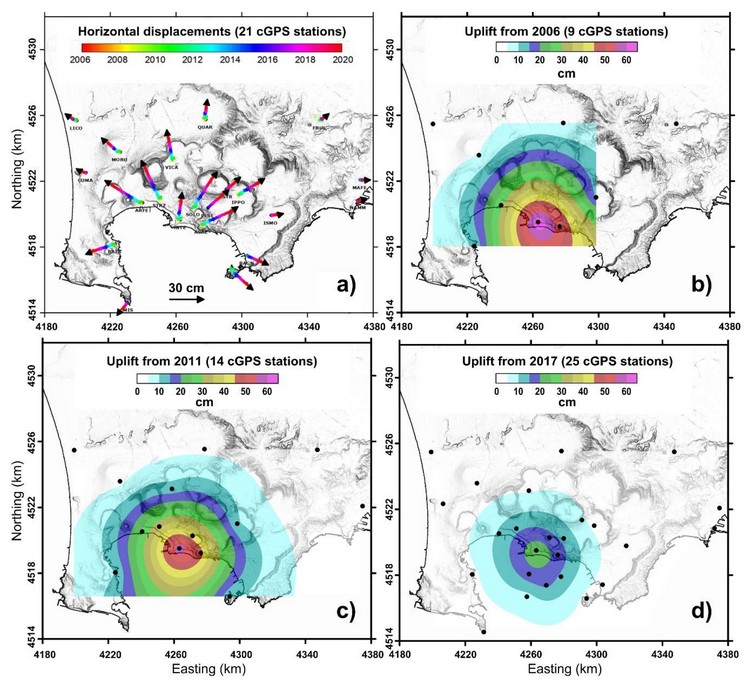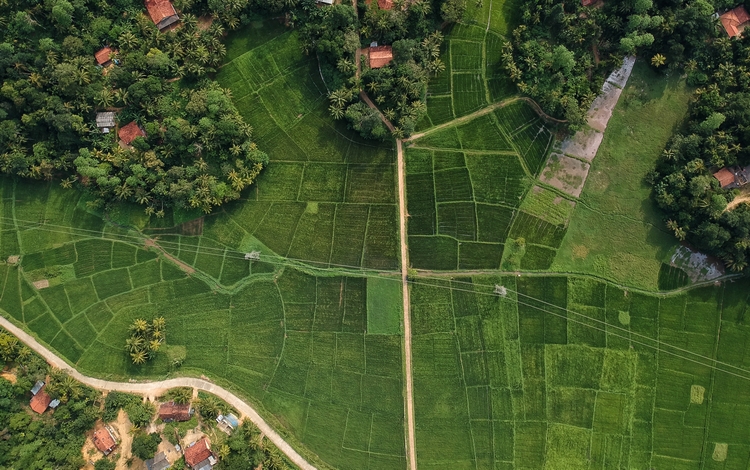Open Access Technical Note | Published online: 11 Jul 2021
The Ground Deformation History of the Neapolitan Volcanic Area (Campi Flegrei Caldera, Somma–Vesuvius Volcano, and Ischia Island) from 20 Years of Continuous GPS Observations (2000–2019)
Abstract
The Neapolitan volcanic area includes three active and high-risk volcanoes: Campi Flegrei caldera, Somma–Vesuvius, and Ischia island. The Campi Flegrei volcanic area is a typical example of a resurgent caldera, characterized by intense uplift periods followed by subsidence phases (bradyseism). After about 21 years of subsidence following the 1982–1984 unrest, a new inflation period started in 2005 and, with increasing rates over time, is ongoing. The overall uplift from 2005 to December 2019 is about 65 cm. This paper provides the history of the recent Campi Flegrei caldera unrest and an overview of the ground deformation patterns of the Somma–Vesuvius and Ischia volcanoes from continuous GPS observations. In the 2000–2019 time span, the GPS time series allowed the continuous and accurate tracking of ground and seafloor deformation of the whole volcanic area. With the aim of improving the research on volcano dynamics and hazard assessment, the full dataset of the GPS time series from the Neapolitan volcanic area from January 2000 to December 2019 is presented and made available to the scientific community.



